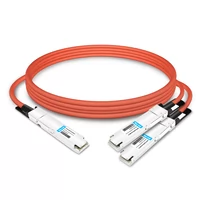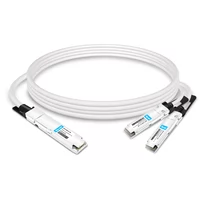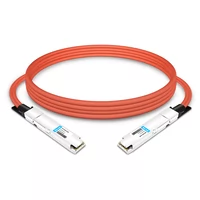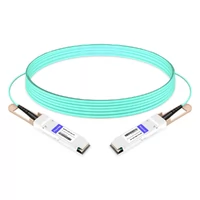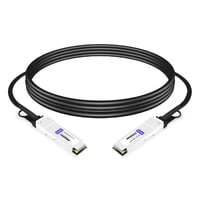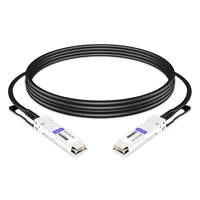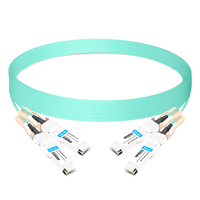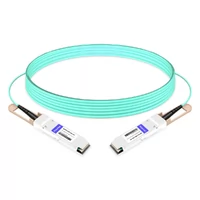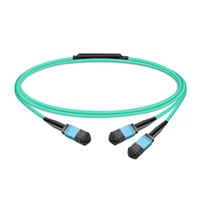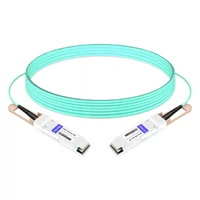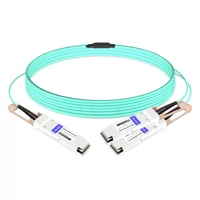Modern high-performance computing and data centers rely on Infiniband technology, which provides quickness and low latency for transferring information. While most people are familiar with Ethernet cables, they may not know that Infiniband cables offer different advantages designed specifically for data-heavy applications. This extensive manual covers everything there is to know about Infiniband cables – their architecture, benefits, and real-life uses. The objective of this article is to give a good knowledge base on how these wires can optimize data transmission in tech-driven environments by going over different types as well as specifications concerning infiniband cables for various readers, including network engineers or IT professionals who deal with advanced networking technologies among others; hence it will also serve as an eye-opener into other aspects related to InfiniBand for those interested in such matters too.
Table of Contents
ToggleWhat is an Infiniband Cable and How Does It Work?
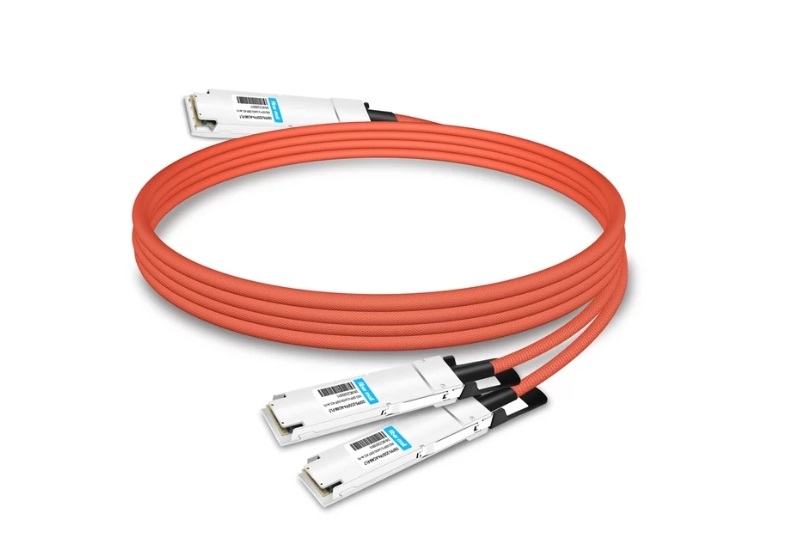
Basic Structure and Functionality of Infiniband Cable
To make the transmission of data between devices faster, Infiniband cables have multiple high-speed fiber optic wires or copper wires that are joined together. The effectiveness and speed of the system are contributed by each wire in the bunch, which supports communication with high bandwidth. In terms of functionality, for data integrity to be guaranteed and latency reduced during signal transmission, error detection techniques, as well as advanced signal modulation, are used in InfiniBand cables. What happens is this achieved through both firmware protocols and hardware which are responsible for optimizing how packets of information should be sent and received while some kind of awareness about it all may be made possible by such advanced technologies as these ones. Such complex technology enables Infiniband cables to outperform any other types when it comes to dealing with large amounts of data at once, making them invaluable for contemporary supercomputers or centers where lots of information is being processed.
Role of Infiniband Cables in High-Performance Computing
The high-performance computer (HPC) industry is heavily dependent on InfiniBand cables. They offer the massive bandwidth and low latency needed for complex calculations and large data transfers. These cables allow computers to communicate with each other so that they can work together on a problem, which helps with things such as processing speed or efficiency. This is very important in supercomputers where it’s necessary to move huge amounts of information quickly. In addition, these wires remove chokepoints while also verifying data correctness, thus increasing the reliability and scalability of HPC systems overall. Hence, they are widely used for science experiments, financial analysis models, and running simulations at scale.
InfiniBand cables are the backbone of high-performance computing (HPC), enabling lightning-fast data transfers with minimal latency. Designed for environments demanding rapid communication, such as data centers, supercomputers, and AI clusters, InfiniBand cables deliver unmatched bandwidth and reliability. In this comprehensive guide, we explore the architecture, types, benefits, and applications of InfiniBand cables, helping network engineers, IT professionals, and tech enthusiasts understand why this technology is critical for modern digital infrastructure. Whether you’re optimizing a data center or building a supercomputing cluster, choosing the right InfiniBand cable can significantly enhance your network’s performance.
InfiniBand cables are specialized networking cables designed to support high-speed, low-latency data transfers in demanding computing environments. Unlike traditional Ethernet cables, InfiniBand cables utilize a switched fabric topology, enabling point-to-point communication that ensures efficient data exchange. These cables are integral to high-performance computing (HPC), artificial intelligence (AI), and enterprise data centers, where massive data throughput and minimal latency are non-negotiable.
Key features of InfiniBand cables include:
- High Bandwidth: Supports data rates from 2.5 Gbps (SDR) to 400 Gbps (NDR), with future-proof scalability.
- Low Latency: Achieves latencies below 1 microsecond, ideal for real-time applications like data mining and AI training.
- Remote Direct Memory Access (RDMA): Reduces CPU overhead by enabling direct memory-to-memory transfers, enhancing efficiency.
- Scalability: The switched fabric architecture allows seamless expansion for growing data center needs.
InfiniBand cables come in two primary forms: copper (Active and Passive) and optical. Each type caters to specific use cases based on distance, cost, and performance requirements, making them versatile for various networking scenarios.
Common Terms and Specifications in Infiniband Cables
Data Rate
The data rate that can be supported by Infiniband cables is signified mainly as SDR (Single Data Rate), DDR (Double Data Rate) QDR (Quad Data Rate), FDR (Fourteen Data Rate), EDR (Enhanced Data Rate), HDR (High Data Rate) and NDR (Next Data Rate). Each increment denotes a significant increase in bandwidth, with NDR targeting speeds of up to 400 Gbps currently.
Latency
Latency in Infiniband systems represents the time taken for a data packet to travel from one node to another. Low-latency performance is what Infiniband is known for, often achieving latencies below 1 microsecond, which is necessary for real-time data processing applications.
Cable Types
Infiniband cables are available either as copper or optical versions. Copper cables are cheaper and therefore commonly used for short distances while optical cables are better suited for longer distances and higher data rates due to their improved signal integrity and reduced electromagnetic interference.
Connector Types
QSFP (Quad Small Form-factor Pluggable) and SFP+ (Small Form-factor Pluggable) are the most common connectors used with Infiniband cables. These connectors enable fast data transfer rates and allow easy insertion/removal, ensuring stable connection throughout.
Topologies
Different network topologies are supported by Infiniband, including point-to-point, switched, and parallel, among others. These configurations enable flexible architecture designs that maximize performance based on HPC environment-specific needs.
Error Detection and Correction
Advanced error detection and correction mechanisms are employed by InfiniBand to ensure data integrity. Cyclic Redundancy Check (CRC) is an example of an error checking protocol used in identifying as well as correcting errors during transmission thereby making sure that information arrives correctly and consistently.
Understanding these general terms and specifications will help professionals evaluate or deploy InfiniBand cabling within their high-performance computing infrastructures.
Different Infiniband Cable Types Explained
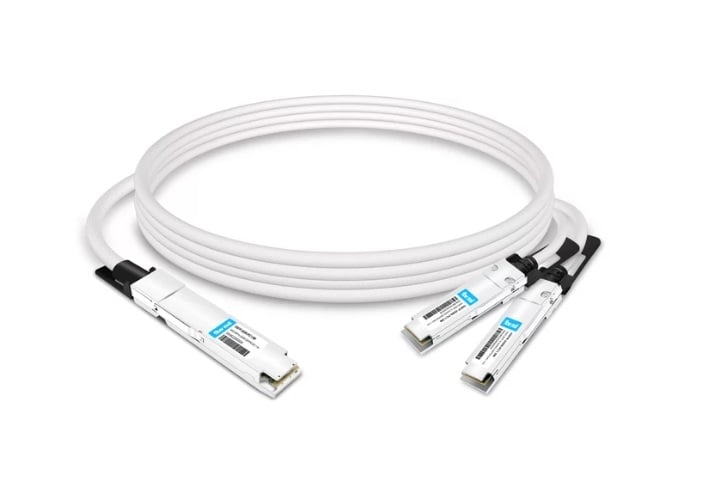
Overview of 4x Infiniband Cables
4x Infiniband cables have four lanes, which enables them to transmit many streams of information at the same time. These cords carry data rates of up to 10 Gbps per lane, totaling 40 Gbps bandwidth capacity. They are available in either copper or optical models and are built for modern data centers’ high throughput needs as well as those found in high-performance computing (HPC) environments.
To connect servers with storage systems is among the key uses for 4x infiniband cables. This is because they allow fast transfer speeds necessary for activities such as real-time simulation or processing large amounts of data quickly. While copper versions are more cost-effective and can be used over short distances; optic types ensure higher speed transmission over long distances while minimizing signal degradation and latency.
QSFP connectors are the most popular type used for 4x infiniband cables due to their ability to provide quick connections that never fail. Additionally, these cords can be applied in various network topologies since the 4x configuration supports a wide range of architectural designs within an HPC setup. By using more advanced error detection techniques like CRC, they can keep high levels of integrity while transmitting lots of information accurately and efficiently.
It is important to know what these specifications mean if you want your high-speed data networks optimized for performance and reliability.
Understanding 12x Infiniband Cables
The 12x Infiniband cables provide four times the bandwidth of its predecessors, and the 4x Infiniband cables still offer better performance than any other type. Built with maximum data transmission speed and efficiency in mind, these 12x Infiniband cables can support up to 120Gbps by using twelve lanes that can transfer at a rate of 10Gbps each. Usually found in heavy-duty computing environments like supercomputing facilities or large-scale data centers where low latency and high throughput are necessary.
There are two types of 12x Infiniband cables: copper and optical; however, the latter is recommended for longer distances or mission-critical applications due to its low signal loss and latency characteristics. The architecture also provides error correction capabilities at this level which ensures integrity even when transferring huge amounts of information quickly.
Connector types include QSFP+ (Quad Small Form-factor Pluggable Plus) and CXP (ConnectXpress), both known for their durability as well as high-performance potential. With an increased lane density compared to other types, it is possible to create various network configurations suitable for complex topologies often encountered within advanced HPC infrastructures.
To sum up, those who work with heavy-duty computing environments need to know about different kinds of Infiniband – especially if they want faster data transfers where there are lots going on.
Comparison of Passive Cables vs. Active Optical Cables
Typically shorter and cheaper, passive cables lack electronic parts to enhance the signal quality. Thus, they utilize inherent characteristics of the cable material and connector quality to ensure that the signals remain intact throughout the transmission process. However, without active components, cross-talks tend to be higher with skew errors over long distances, thereby limiting their use in high bandwidth applications that require greater performance levels.
Active Optical Cables (AOC) are equipped with built-in electronics that convert electrical signals into optical form and vice versa. These devices greatly improve signal strength for longer-distance transmissions by reducing attenuation and interference as compared to passive cables. AOCs best suit high-speed data center interconnections or environments where speed is critical due to its ability to cover large distances while maintaining good quality signals at all times. Moreover, it provides more flexibility in cable management due to its lighter weight and smaller diameter when compared to similar passive copper cables, but this comes at a cost because they need a power supply.
In conclusion we can say that whether you choose between an active or passive optical cable will depend on your needs. Passive ones work well for short ranges where cost is important while actives are better suited for long range applications such as those found in data centers where speed and signal integrity must be maintained over significant distances.
Choosing the right InfiniBand cable is critical for optimizing network performance. Below, we break down the three main types of InfiniBand cables, their specifications, and ideal applications to help you make an informed decision.
Active Copper Cables (ACC):
Overview: These InfiniBand cables include built-in signal conditioning electronics to maintain signal integrity over longer distances (up to 7 meters).
Performance: Supports data rates up to 100 Gbps, ideal for short-range connections within server racks.
Use Case: Perfect for cost-effective, high-speed connections in compact data center setups or HPC clusters.
Passive Copper Cables (PCC):
Overview: Lacking signal conditioning, these cables are more affordable but limited to shorter distances (5-10 meters).
Performance: Suitable for connections within a single rack, with data rates up to 100 Gbps.
Use Case: Ideal for budget-conscious setups requiring reliable, short-range connectivity.
Optical Fiber Cables (AOC):
Overview: Active Optical Cables (AOCs) use fiber optics for high-speed, long-distance data transmission with minimal signal degradation.
Performance: Supports data rates up to 400 Gbps (NDR) and distances up to 100 meters or more.
Use Case: Best for interconnecting data centers or large-scale HPC environments requiring high bandwidth over extended distances.
Choosing the Right Cable: The decision depends on factors like distance, budget, and performance needs. For short-range, cost-effective solutions, ACC or PCC cables suffice, while AOCs excel in long-distance, high-bandwidth scenarios.
InfiniBand Cable Standards and Data Rates
InfiniBand cables adhere to standards set by the InfiniBand Trade Association (IBTA), ensuring compatibility and performance across various data rates. Understanding these standards helps in selecting the right InfiniBand cable for your needs.
Data Rate Standards:
- SDR (Single Data Rate): 2.5 Gbps per lane, suitable for legacy systems.
- DDR (Double Data Rate): 5 Gbps per lane, offering improved performance.
- QDR (Quad Data Rate): 10 Gbps per lane, common in older HPC setups.
- FDR (Fourteen Data Rate): 14 Gbps per lane, balancing cost and speed.
- EDR (Enhanced Data Rate): 25 Gbps per lane, widely used in modern data centers.
- HDR (High Data Rate): 50 Gbps per lane, ideal for AI and machine learning workloads.
- NDR (Next Data Rate): Up to 100 Gbps per lane, targeting cutting-edge applications like 400G networks.
Form Factor Standards:
- QSFP Connectors: Common for copper and optical InfiniBand cables, supporting multiple data rates (e.g., QSFP28 for EDR, QSFP56 for HDR).
- MPO Connectors: Used in optical cables for high-density, multi-lane connections.
- OSFP Connectors: Emerging for NDR applications, supporting ultra-high bandwidth.
Applications and Uses of Infiniband Cables
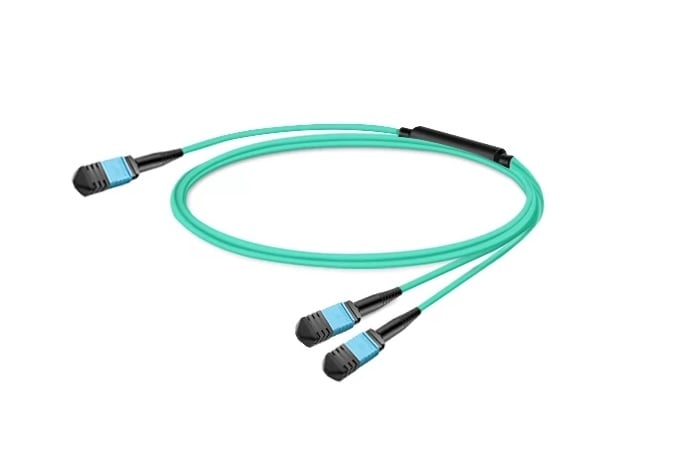
Network and Data Center Applications
High throughput, low latency, and scalability are why InfiniBand cables are necessary for network and data center applications. These qualities have earned them the preference of many people who use high-performance computing (HPC) systems that involve linking servers with storage units as well as networking devices. It boasts an extensive bandwidth capable of handling massive amounts of data transfers coupled with its efficiency in the protocol, making sure that even when dealing with data-intensive tasks, it performs optimally.
Apart from HPCs, enterprise-level installations can also benefit from deploying InfiniBand cables within their premises, especially now that there is so much demand for virtualization, artificial intelligence (AI), and big-data analytics capabilities in such facilities. In other words, they act as a bridge between different parts of the data center, which need to communicate fast and reliably, hence improving overall productivity while at the same time driving operational efficiency.
Moreover, the ability of InfiniBand to detect errors robustly and correct them ensures the integrity and reliability of the information, which is key to achieving uninterrupted service delivery among complex systems found within large-scale DCs. Additionally, their versatility and compatibility across many hardware platforms have greatly contributed towards wider adoption within existing networks and future-proofing these critical infrastructure assets.
Role in High-Performance Computing Environments
In HPC contexts, InfiniBand cables are very important because they provide the needed bandwidth and low latency to process big computations effectively. InfiniBand cables have a lot of benefits over other types of cables due to their advanced features such as Remote Direct Memory Access (RDMA) which reduces CPU overhead greatly while increasing data throughput. This allows faster communication between compute nodes necessary for running complicated simulations or analyzing large datasets in fields like weather prediction, scientific discovery and financial modeling.
Also, Infiniband networks can be scaled easily thus making them suitable for constructing large HPC clusters that can accommodate growing computational needs without affecting performance negatively. Additionally, its error detection and recovery are more robust; hence, such systems ensure the reliable transfer of data, preserving integrity during critical calculations. Therefore, many people choose these cables during HPC installation so as to achieve maximum efficiency together with peak performance levels.
Industry-Specific Uses for Infiniband Cables
In the world of financial services, Infiniband cables are used to make trade applications and big data analytics faster by reducing latency and increasing the throughput necessary for making immediate decisions based on current information about risks. They also find their application in the automotive and aerospace industries, where they are used to conduct simulations and engineering analyses that need fast data transfer rates for computational fluid dynamics (CFD) or finite element analysis (FEA). Moreover, these cables play a significant role in medical imaging as well as genomic research within the healthcare sector since they allow efficient handling of large amounts of data, which greatly speeds up diagnosis accuracy while creating opportunities for personalized medicine development. Therefore, there is no doubt that InfiniBand technology can be applied successfully in many demanding fields.
Choosing the Right Infiniband Cable for Your Setup
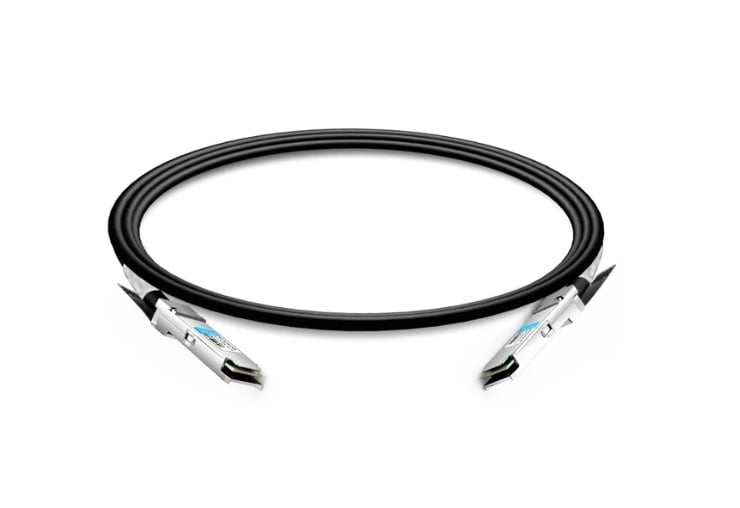
Factors to Consider: Length, Bandwidth, and Compatibility
When selecting Infiniband cables for your setup, evaluating three key factors: length, bandwidth, and compatibility is crucial.
Length: Cable length affects signal integrity and performance. Shorter cables generally exhibit lower latency and better signal quality, which is important for high-frequency trading (HFT) applications and other applications sensitive to latency. However, longer cables allow for greater physical flexibility in accommodating larger and more extensive network configurations.
Bandwidth: Bandwidth represents the data transfer rate, i.e., how much data can be transmitted per second. It determines the speed at which information flows through systems or networks, affecting the efficiency of operations involving large amounts of data, such as big-data analytics or medical imaging. To avoid bottlenecks, ensure that selected cables meet or exceed the required bandwidths for specific applications.
Compatibility: Compatibility refers to ensuring that Infiniband cables match with hardware and software components within a given system. This involves checking connectors used, evaluating support for different InfiniBand standards like SDR, DDR, QDR, FDR, EDR, HDR, or NDR, among others, and finally testing interoperability with other elements making up the network infrastructure. Proper compatibility guarantees smooth integration and maximum performance of HPC setup.
These are among the considerations you need to make so as to choose those infiniband cables that will be able to satisfy your particular use case while still delivering strong and efficient network performance.
Top Manufacturers and Suppliers
Mellanox Technologies: Mellanox, now owned by NVIDIA, is a well-known company that makes high-speed InfiniBand cables and other network devices. All of its products are characterized by their advanced technology and superior quality; however, the firm produces many types of cables for different bandwidths and distances.
Cisco: Cisco is among the most influential networking firms globally. It provides an array of InfiniBand cables as well as network solutions ranging from simple switches to complex routers. These products are appreciated for being reliable across diverse high-performance computing setups — they can be relied on in terms of performance even under heavy workloads that demand constant availability.
Intel: Intel is one of the major suppliers of InfiniBand products in the market today. The company’s cables are built specifically for fast data transfer speeds while ensuring overall efficient network performance. They are known for being innovative and highly adaptable to severe conditions typical within HPC environments.
Selecting any item from these top-tier manufacturers ensures that you have chosen reliable, compatible devices that will also provide excellent results throughout use under various circumstances involving speed or computation power.
Cost vs. Performance: Finding the Best Value Cable
Balancing cost against performance is crucial to figuring out the best value of InfiniBand cables. These are some of the factors that should be taken into account as per current leading industry insights if you want to get optimal cable solution:
- Requirements for Bandwidth and Speed: Ensure that you choose a cable with enough bandwidth and speed for data transfer in your specific HPC application. Normally, such high-capacity wires are expensive, but they save time when dealing with large volumes of information.
- Total Cost Ownership (TCO): Reflect on total costs over time, including initial purchase price, durability, replacement needs, and upgrades required for energy efficiency, among others. It may be advisable to make an early investment in quality cables which can lead to reduced costs through less downtime and maintenance expenses.
- Manufacturing Quality & Warranty: Go for recognized brands like Mellanox, Cisco, or Intel when buying these items. The good thing about using cables from top manufacturers is that their production standards are very high; hence, reliability is guaranteed throughout their service life, coupled with the better value provided by longer warranties offered by such firms.
- Compatibility & Integration: Consider how well different types of these wires work together with other network components in use at the moment while watching out whether any given one supports scalability demands now or later on. This ensures smooth operation between devices thus preventing problems associated with mixing products belonging to different generations or standards whose compatibility might not have been tested.
With these considerations, it becomes easier to choose Infiniband connection cables that will satisfy speed requirements while still being pocket-friendly, given the performance expected from them within an organization’s infrastructure supporting high-power applications.
Maintenance and Troubleshooting of Infiniband Cables
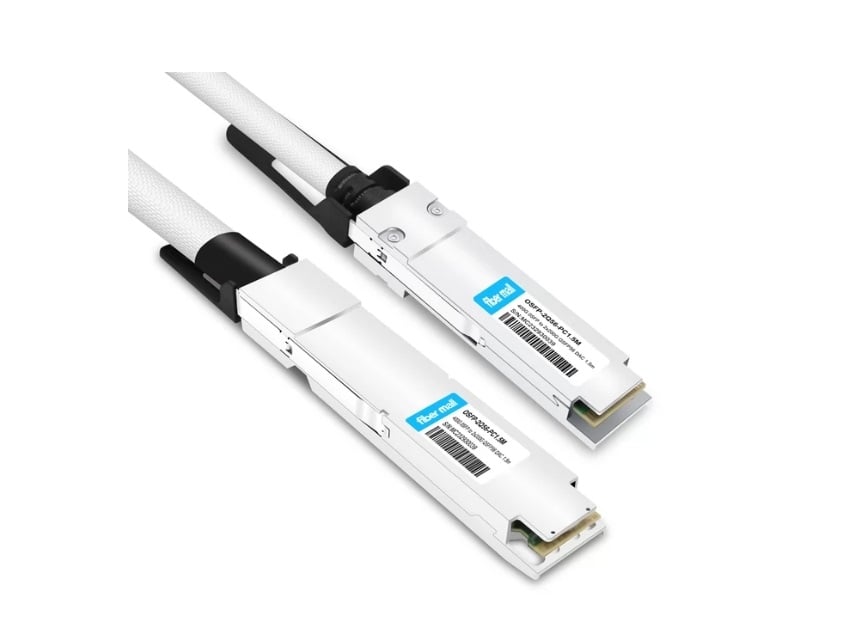
Common Issues and How to Resolve Them
Damage or Wear Expressed in a Physical Manner
Problem: Physical damage and deterioration of InfiniBand cables can cause signal loss or drop in connectivity altogether. Such damages may result from improper touch, bending them the wrong way among other environmental issues.
Solution: Regularly check such wires for visible indications of wearing out like fraying parts or bent pins. If any cable is found to be defective then replace it with another one immediately. Additionally, appropriate methods of managing cables should be put in place so as to minimize physical strains on them.
Connectors Malfunctioning
Problem: Over time connectors could develop faults due to being inserted and removed repeatedly which might lead to intermittent connection problems or complete failure to connect.
Solution: Make sure that every connector is clean without any dust particles or debris. Use connectors made by good manufacturers and replace those ones which are not working well. Also avoid applying too much force when joining or separating these two cables since this can prolong their lifespan.
Interference with Signals or Crosstalks
Problem: Signal integrity may be disrupted by electromagnetic interference (EMI) produced elsewhere along neighbouring lines; also known as crosstalks thus affecting data transmission quality.
Solution: It is important to employ adequately shielded wires so as to reduce EMI and crosstalks. Keep apart these cables and route them properly thereby minimizing interferences between themselves. Additionally, installing EMI filters can help solve this problem or using fibres meant for areas with high susceptibility to EMI would work better.
If you deal with preventive maintenance for these common points alongside proper handling techniques, your InfiniBand cables will last longer while serving reliably at all times.
Best Practices for Infiniband Cable Maintenance
To make sure that your InfiniBand cables work at their best and last longer, there are some things that you have to keep in mind:
- Regular Check-ups: Periodically inspecting your InfiniBand cables can help you notice any wear and tear or environmental damage. You will know that something is wrong if the ends of your cables start fraying, the connectors bend or the cable sheathing changes color.
- Right Handling: Handle the cables with care to avoid damaging them. Do not wrap them too tightly, step on them, or place heavy objects over them. When removing a cable, hold its connectors instead of pulling the cable itself; this prevents strain on internal wires.
- Cable Management That Works: Organize all your cables neatly using systems like trays or racks; this helps reduce physical stress on these wires. Label each one correctly before routing so as to avoid tangling during maintenance or upgrades, sometimes accidentally causing damage to them.
- Control Environmentally: Always maintain stable temperature and humidity around where these wires run through. Keep off direct sunlight, excessive heat, and moisture, as such conditions may lead to the gradual deterioration of cable materials.
- Shielding and Grounding: Employ shielded types of cables plus proper grounding system which can help curb crosstalks between different lines caused by electromagnetic interferences especially when there are high levels of electrical noise within an area.
- Cleaning Regularly: Ensure clean connectors that are free from dust particles, dirt, and oxidation. Use appropriate cleaning tools and solutions specifically made for electronic components so as not to compromise the good connectivity always expected of them.
- Training/Awareness Creation: Train staff members about how they should handle installing & maintaining InfiniBand cords while observing the correct practices needed for this kind of product. Awareness campaigns also go a long way in preventing common errors leading to damage done on such wires.
These measures will ensure reliable data transmission rates for high performance computing applications through improved performance, increased availability/life span of the system and reduced downtime due to cable faults.
Tools and Resources for Cable Diagnostics
To ensure the trustworthiness and efficiency of your cable infrastructure, it is important to use proper diagnostic tools and resources. These are some necessary tools and resources:
- Cable Testers: Continuity testers, certification testers and time-domain reflectometers (TDR) among other devices can help detect faults, verify cable performance as well as ensure industry standards compliance.
- Network Analyzers: Protocol analyzers and network sniffers are examples of tools that can be used to diagnose problems in data transmission such as network traffic assessment due to latency within a network.
- Signal Generators and Oscilloscopes: Instruments like these assist in detailed analysis of signal integrity by showing where there may be degradation or noise interference caused by electromagnetic energy fields around cables.
- Software Tools: Diagnostic software should be able to monitor network performance; carry out stress tests on networks while generating reports about cable health plus performance.
- Documentation & Manuals: Manufacturer provided documentation which includes specification sheets alongside user manuals might offer guidance for correct usage, troubleshooting tips as well as maintenance procedures.
- Vendor Support: Engaging with vendors offering support services and access to advanced diagnostic facilities could help resolve complex issues related to cables.
These resources will enable you to diagnose potential problems within your cable infrastructure, thereby enhancing its performance and reliability.
Future Trends in Infiniband Cables
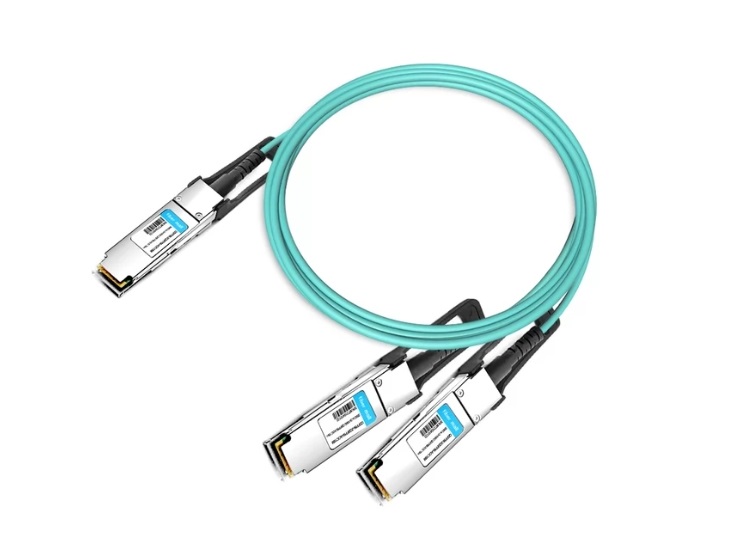
Advancements in High-Performance Computing
The development and use of Infiniband cables have been revolutionized by recent advances in high-performance computing (HPC). Among them is the increasing adoption rate of artificial intelligence (AI) and machine learning (ML) workloads, which require larger data throughput with minimal latency. To meet these demands, Infiniband cables are becoming faster; for instance, HDR (High Data Rate) and NDR (Next Data Rate) standards provide speeds greater than 200 Gbps.
Another important stride involves incorporating more advanced error detection and correction techniques. These developments seek to improve the reliability and integrity of information, especially in large-scale data centers where massive amounts of data flow nonstop. Better signal processing capabilities found within Infiniband cables help to reduce packet loss while maintaining steady performance under heavy loads.
Lastly, modular architecture, together with scalability options in HPC systems, has enabled easy deployment of InfiniBand cables for optimized performance. This means that networks can be reconfigured on the fly so as to suit various computational tasks best. Moreover, as energy efficiency becomes a bigger concern in the field of supercomputing due to its exorbitant costs –– this also propels infinite technology forward, making it an indispensable part of modern HPC environments today.
Emerging Network Technologies
The future of data communication and processing is greatly influenced by emerging network technologies. These are some of the technologies:
- 5G Networks: Bandwidths have been improved in networks with the introduction of 5G. It is also characterized by low latency and high reliability. This next-gen network technology supports ultra-reliable low-latency communication (URLLC) and massive machine-type communication (MTC), thus making it suitable for the Internet of Things (IoT) and smart city applications.
- Quantum Networking: Quantum networking is a secure way to transmit data efficiently based on the principles from quantum mechanics. Quantum entanglement alongside quantum key distribution (QKD) assures this technology provides unmatched safety for information thereby laying a foundation towards higher cybersecurity levels as well as data integrity.
- Software-Defined Networking (SDN): SDN creates flexibility within an architecture by separating the control plane from the data plane, hence allowing programmable management systems for networks and dynamic allocation of resources through automation such as virtualization, among others. Particularly, useful in data centers and cloud computing environments where agile and scalable network configurations are supported.
All of these breakthroughs together redefine what can be achieved through network communications; they offer game-changing solutions to address growing requirements for more information capacity along with safe instantaneous connectivity.
Future-Proofing Your Infiniband Cable Setup
To ensure that your Infiniband cable setup is future-proof, there are certain things you need to take into account. First, choose top-quality cables that are in line with the present standards, for example, HDR (High Data Rate) Infiniband, which can support speeds of up to 200Gbps. This ensures they can be used with current and upcoming hardware. Additionally, investing in modular infrastructure enables simple upgrades and scalability without having to do complete replacements. Performance and flexibility can also be improved by using advanced management software that is used for monitoring and setting up an InfiniBand network. It is also good to keep yourself updated about emerging trends as well as potential future developments in Infiniband technologies so as to make informed decisions based on them while adhering to industry standards currently accepted worldwide.
Reference sources
Frequently Asked Questions (FAQs)
Q: What is an Infiniband cable and what distinguishes it from traditional networking cables?
A: The Infiniband cable is a category of high-speed data transfer cables used in computer networks. It has low latency and can handle large quantities of data at once. Its capacity to transmit information is much higher than that of conventional ethernet or other networking cables.
Q: How do copper Infiniband cables compare to fiber Infiniband cables?
A: Copper-based passive copper or DAC (direct attach copper) lines are flexible and perform well over short distances, which makes them cost-effective solutions for such environments when compared with fiber optic-based ones. On the other hand, fiber optic cables provide very high reliability over long distances because they are immune to electromagnetic interference (EMI), which causes signal degradation in copper conductors. Both types can be considered as high-performance alternatives depending on requirements dictated by the distance and the available budget.
Q: What does DDR and FDR mean in the context of Infiniband cabling?
A: DDR stands for double data rate, while FDR stands for fourteen data rate; these terms refer to different signaling rates employed within InfiniBand cables indicative of their respective speeds at which they are capable of transferring data. For instance, compared to previous standards, DDR offers notable improvement in terms of performance, but FDR goes further still by giving even more throughput, thus being necessary where applications demand fast transfers coupled with low delays.
Q: Can I use my current servers and switches with Infiniband cables?
A: Yes, it should be possible to use existing server hardware along with network switches designed specifically for InfiniBand technology since most manufacturers, such as Mellanox, ensure compatibility across various interfaces like PCI-X or QSFP56 through their cable assemblies.
Q: Which form factors are supported by Infiniband cabling?
A: There are several form factors for InfiniBand wires, namely 1X, 4X, and 12X. The different numbers indicate how many lanes are available for data transmission. A higher number implies more bandwidth but also increased cost; thus, 4X cables offer a good balance between these two extremes in terms of performance versus price.
Q: How does low latency help high-performance computing environments?
A: Low latency Infiniband cables are a must-have in high-performance computing environments because they reduce the time it takes for data to travel between nodes, processors, and servers. This speeds up response times and improves how data is handled, which is necessary for complex calculations and real-time applications.
Q: What are the options for Infiniband cable lengths and what are they typically used for?
A: There are different length options available for Infiniband cables like 1m, 10m, or even 100m to cater to various networking requirements. Shorter cables such as 1m are often used to connect within the same server rack while longer ones such as 10m can be used to connect devices across different racks or rooms. Very long cables like 100m are suitable when connecting distant locations within a data center.
Q: Can you tell me about bend radius in Infiniband cables?
A: The minimum radius at which an Infiniband cable can be bent without affecting its performance is referred to as the bend radius. A proper bend radius ensures that the cable remains intact and continues transmitting data effectively thus supporting high-speed & reliable dense server environment data transfer.
Q: What is the role of connectors and shields in Infiniband cables?
A: Connectors and shields play a critical role in Infiniband cables where connectors ensure secure connections between devices while shielding protects against electromagnetic interference, thus improving the performance plus the reliability of data transmission.
Q: What distinguishes active from passive infiniband cables?
A: Passive copper infinibands among other passive infinibands do not have any active electronic components that boost signal strength hence they are more power efficient & cost effective over short distances. On the other hand, active infinibands have electronic components which enable them maintain signal integrity over long distances thus suitable for large-scale DCI applications.
Recommend reading: What is InfiniBand Network and the Difference with Ethernet?
Related Products:
-
 NVIDIA MCA7J60-N004 Compatible 4m (13ft) 800G Twin-port OSFP to 2x400G OSFP InfiniBand NDR Breakout Active Copper Cable
$800.00
NVIDIA MCA7J60-N004 Compatible 4m (13ft) 800G Twin-port OSFP to 2x400G OSFP InfiniBand NDR Breakout Active Copper Cable
$800.00
-
 NVIDIA MCP7Y60-H01A Compatible 1.5m (5ft) 400G OSFP to 2x200G QSFP56 Passive Direct Attach Cable
$116.00
NVIDIA MCP7Y60-H01A Compatible 1.5m (5ft) 400G OSFP to 2x200G QSFP56 Passive Direct Attach Cable
$116.00
-
 NVIDIA MCA4J80-N004 Compatible 4m (13ft) 800G Twin-port 2x400G OSFP to 2x400G OSFP InfiniBand NDR Active Copper Cable
$650.00
NVIDIA MCA4J80-N004 Compatible 4m (13ft) 800G Twin-port 2x400G OSFP to 2x400G OSFP InfiniBand NDR Active Copper Cable
$650.00
-
 NVIDIA MFS1S00-H003V Compatible 3m (10ft) 200G InfiniBand HDR QSFP56 to QSFP56 Active Optical Cable
$350.00
NVIDIA MFS1S00-H003V Compatible 3m (10ft) 200G InfiniBand HDR QSFP56 to QSFP56 Active Optical Cable
$350.00
-
 NVIDIA(Mellanox) MCP1650-H003E26 Compatible 3m (10ft) Infiniband HDR 200G QSFP56 to QSFP56 PAM4 Passive Direct Attach Copper Twinax Cable
$80.00
NVIDIA(Mellanox) MCP1650-H003E26 Compatible 3m (10ft) Infiniband HDR 200G QSFP56 to QSFP56 PAM4 Passive Direct Attach Copper Twinax Cable
$80.00
-
 NVIDIA(Mellanox) MC220731V-015 Compatible 15m (49ft) 56G FDR QSFP+ to QSFP+ Active Optical Cable
$89.00
NVIDIA(Mellanox) MC220731V-015 Compatible 15m (49ft) 56G FDR QSFP+ to QSFP+ Active Optical Cable
$89.00
-
 NVIDIA(Mellanox) MCP1600-E003E26 Compatible 3m InfiniBand EDR 100G QSFP28 to QSFP28 Copper Direct Attach Cable
$43.00
NVIDIA(Mellanox) MCP1600-E003E26 Compatible 3m InfiniBand EDR 100G QSFP28 to QSFP28 Copper Direct Attach Cable
$43.00
-
 NVIDIA MFS1S90-H005E Compatible 5m (16ft) 2x200G QSFP56 to 2x200G QSFP56 PAM4 Breakout Active Optical Cable
$805.00
NVIDIA MFS1S90-H005E Compatible 5m (16ft) 2x200G QSFP56 to 2x200G QSFP56 PAM4 Breakout Active Optical Cable
$805.00
-
 NVIDIA MFS1S00-H005V Compatible 5m (16ft) 200G InfiniBand HDR QSFP56 to QSFP56 Active Optical Cable
$355.00
NVIDIA MFS1S00-H005V Compatible 5m (16ft) 200G InfiniBand HDR QSFP56 to QSFP56 Active Optical Cable
$355.00
-
 NVIDIA MFP7E20-N003 Compatible 3m (10ft) 8 Fibers Low Insertion Loss Female to Female MPO12 to 2xMPO12 Polarity B APC to APC LSZH Multimode OM3 50/125
$52.00
NVIDIA MFP7E20-N003 Compatible 3m (10ft) 8 Fibers Low Insertion Loss Female to Female MPO12 to 2xMPO12 Polarity B APC to APC LSZH Multimode OM3 50/125
$52.00
-
 NVIDIA(Mellanox) MFS1S00-H100E Compatible 100m (328ft) 200G HDR QSFP56 to QSFP56 Active Optical Cable
$465.00
NVIDIA(Mellanox) MFS1S00-H100E Compatible 100m (328ft) 200G HDR QSFP56 to QSFP56 Active Optical Cable
$465.00
-
 NVIDIA MFS1S50-H010V Compatible 10m (33ft) 200G InfiniBand HDR QSFP56 to 2x100G QSFP56 PAM4 Breakout Active Optical Cable
$495.00
NVIDIA MFS1S50-H010V Compatible 10m (33ft) 200G InfiniBand HDR QSFP56 to 2x100G QSFP56 PAM4 Breakout Active Optical Cable
$495.00

